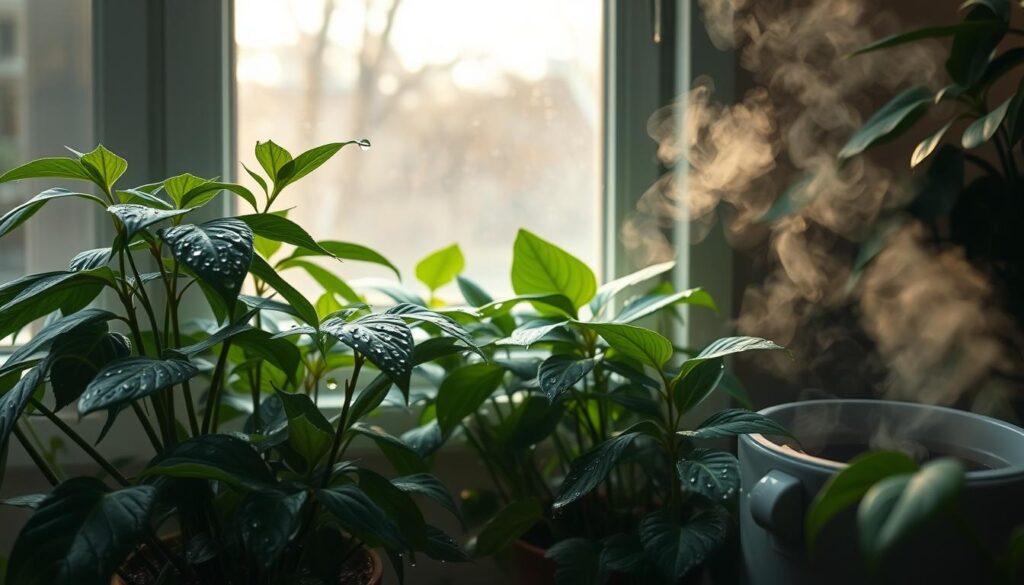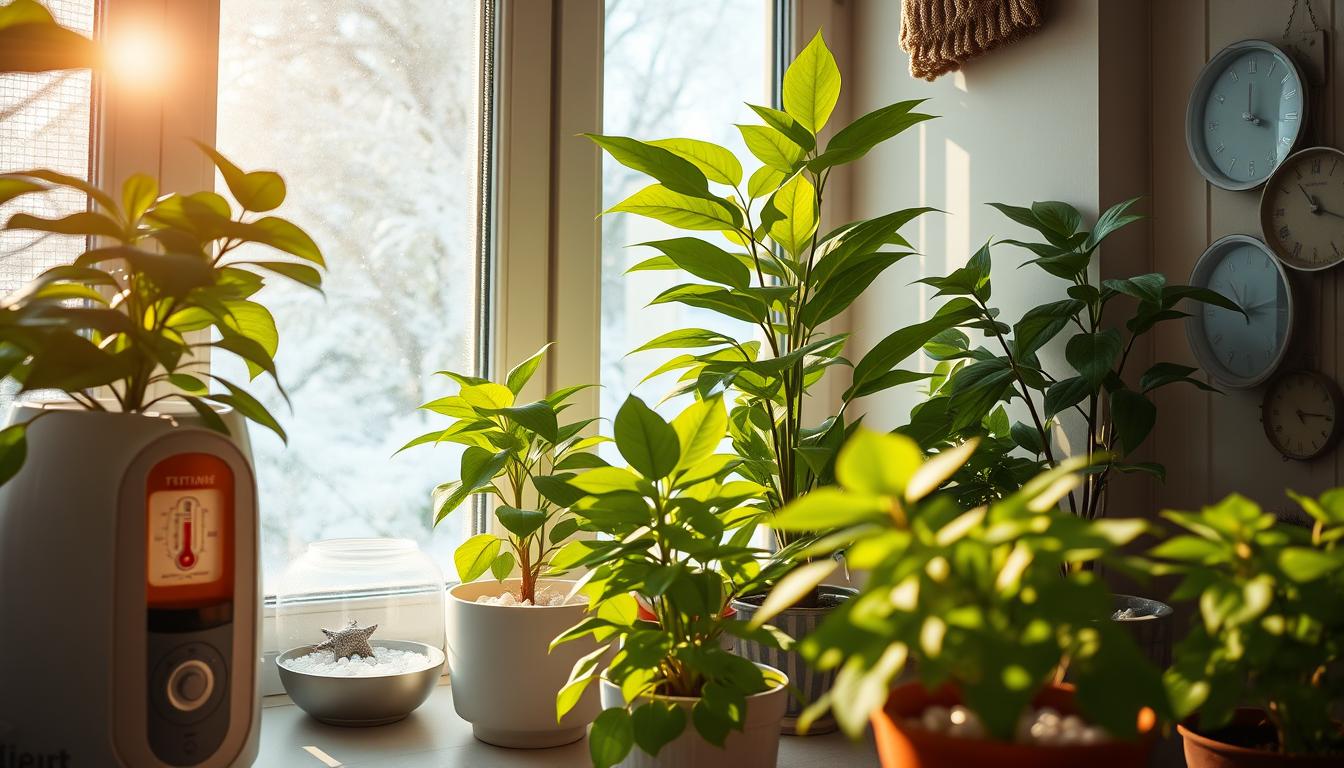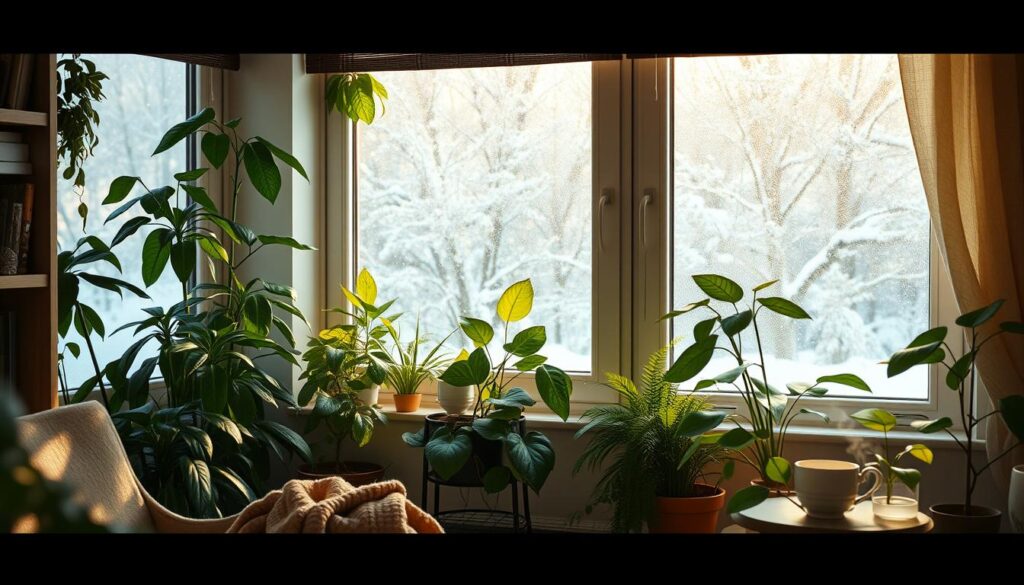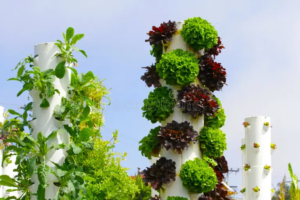As winter comes, you want your home to be a cozy spot for your houseplants. To keep them healthy, you need to change how you care for them indoors. With the right tips, your plants can handle the cold and short days. We’ll share seasonal tips to keep your plants in top shape.
Winter can be tough on houseplants, but with the right care, they can thrive. Our winter care tips will help you create a warm space for your plants. Whether you’re new to plants or have experience, our guide will help you keep your plants happy and healthy.
We aim to give you the best tips for winter houseplant care. We’ll talk about watering, humidity, temperature, and fertilization. By the end of this article, you’ll know how to keep your houseplants happy all winter.
Water Less, But Wisely
As the seasons change, it’s time to rethink how you water your houseplants in winter. They need less water because it’s colder and the days are shorter. Too much water can harm them, so finding the right amount is key.
To figure out the best watering schedule for winter, know what your plants need. Check the soil moisture by sticking your finger in up to the first knuckle. Water only when it’s dry. Also, use room-temperature water to avoid shocking the roots. This way, you can water your plants wisely during winter.
By watering wisely, your houseplants can thrive in winter. It’s about finding the right balance and paying attention to their needs. With practice and patience, you can become a pro at caring for your plants.
Understanding Houseplant Watering Needs
As you learn about houseplant care, stay informed about new tips. This way, you can give your plants the best care, even in winter. With the right watering schedule, your home will be filled with beauty and peace.
Keep Humidity Up
When caring for indoor plants in winter, keeping humidity right is key. Winter air is drier, which stresses plants. Use a humidifier or group plants to keep humidity up.
For winter humidity for houseplants, aim for 40-60% relative humidity. Place plants on a water and pebble tray. This raises humidity as water evaporates.
Simple Humidity Solutions
Simple ways to keep winter humidity for houseplants include humidifiers or grouping plants. These steps help your plants thrive in winter, staying healthy and bright.

By following these tips and keeping humidity right, your houseplants will get the best winter care. They will continue to grow and flourish with proper indoor plant care in winter.
Keep Temperatures Steady
As you work on keeping houseplants warm in winter, it’s key to keep the temperature steady. Most houseplants like daytime temperatures between 65-75°F (18-24°C). At night, they prefer it 5-10°F (3-6°C) cooler. Avoid placing them near drafts or extreme temperatures like heating vents and air conditioning units.
For a winter houseplant survival guide, controlling temperature is vital. Keep your plants away from cold windows, as the glass can drop the temperature. Place them in a spot with a steady temperature. Consider using a thermometer to check the temperature.
By following these tips, you’ll create a cozy home for your houseplants. A winter houseplant survival guide is about finding the right balance. With the right temperature and care, your houseplants will thrive all year. They will flourish, even in winter, by keeping houseplants warm in winter.
Avoiding Drafts and Extreme Temperatures
To keep your houseplants healthy and happy, avoid cold spots. Don’t place them near doors, windows, or areas where cold air can get in. By taking these steps and following a winter houseplant survival guide, your plants will thrive in the coldest winters. You’ll master the art of keeping houseplants warm in winter.
Skip the Fertilizer
When it comes to winter fertilizing for houseplants, it’s key to know their needs change. In winter, houseplants slow down and rest. They don’t need as much fertilizer, and too much can harm them.
Instead, focus on water, humidity, and temperature. These are crucial for your plants’ health in winter. By doing so, you’ll help them stay healthy until spring.
Houseplants are built to handle winter with little care. By skipping fertilizer and meeting their other needs, you’ll help them thrive. When spring comes, you can start fertilizing again, and they’ll grow strong.
Understanding Fertilization Needs During Winter
Knowing your houseplants’ winter needs is important. Remember, winter fertilizing for houseplants is not needed. By following these seasonal houseplant tips, you’ll keep your plants happy and healthy all year.
Find the Light
Lighting is key for indoor plants in winter. The days are shorter, and the sun is lower, making less natural light available. To give your plants the best light, you need to provide the right amount.
Most houseplants like bright, indirect light. Some can handle low light. Check what your plants need. Move them to a south-facing window or use grow lights if needed. But, don’t put them too close to the window to avoid cold glass.
Understanding Light Requirements
Some plants, like Chinese Evergreen and Pothos, do well in low light. Others, like succulents and cacti, need bright, direct light. Knowing what your plants need helps them thrive in winter.
Here’s a table to help you figure out the light needs for common houseplants:
| Plant | Light Requirement |
|---|---|
| Chinese Evergreen | Low |
| Pothos | Low-Medium |
| Succulents | Medium-High |
| Cacti | High |
By following these tips, you can make sure your houseplants get the right light. This way, they’ll thrive in winter and get the best care.
Find the Light
To keep your houseplants happy in winter, follow these tips. Check your plants often for pests or diseases. This way, your indoor plants will stay bright and healthy all year.
As winter comes, change how you care for your plants. Water them less, skip the fertilizer, and add extra light. Every plant is different, so watch them closely and adjust as needed.
With these tips, your indoor garden will thrive, even when it’s cold outside. Spend a bit more time caring for your plants in winter. This way, you can enjoy their beauty and benefits all year. Happy gardening!





